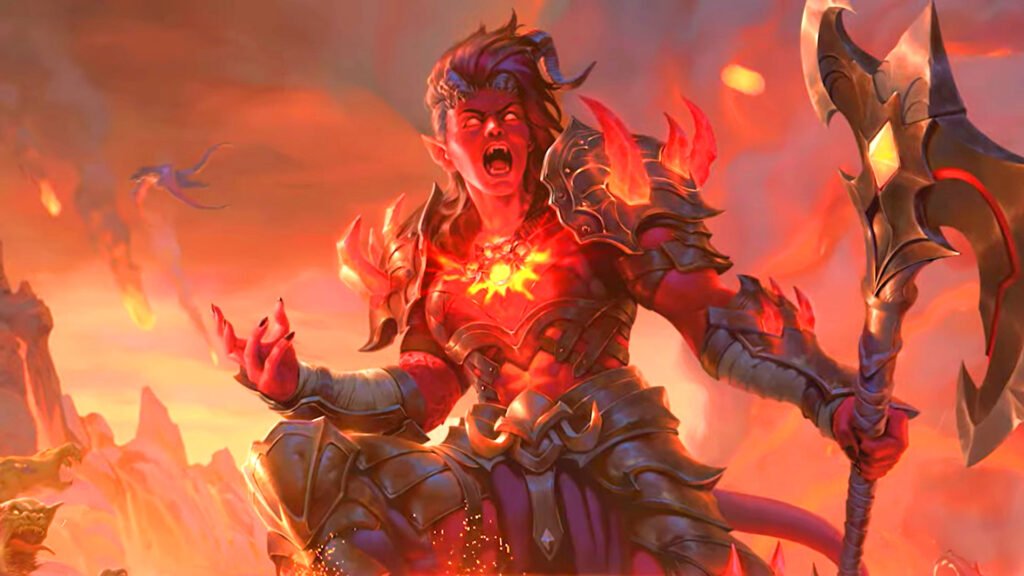
When Dungeons and Dragons announced it was returning to the Forgotten Realms setting with two new books, I was elated. Lovers of lore have been starved for content for years, and the thought of a fresh deep dive into D&D’s most famous locale was enticing. However, now that more details have been revealed, Wizards of the Coast has me worried.
This year’s DnD release schedule features two Forgotten Realms books, Heroes of Faerûn and Adventures in Faerûn. The first promises new character options, factions, and backstory ideas, while the second is stuffed with adventures and setting gazeetteers to help you run them.
Along with this, Wizards of the Coast will be releasing three ‘digital DLC’ mini-books. One remains a secret, but we know details about the other two. The first is Netheril’s Fall, a flashback adventure that takes us back to an important event for both Baldur’s Gate 3 and the Forgotten Realms in general. The second is Astarion’s Book of Hungers, a vampire-themed booklet that lets you adventure with Astarion and hang out in his favorite tavern.

In case you weren’t sure whether these books would appeal to the videogame fans, they’ve also slapped Karlach and Minsc on the cover of the player expansion.
I adore Baldur’s Gate 3, and I know that its release is the perfect reason for Wizards of the Coast to return to the Forgotten Realms. I was a long-time Dungeons and Dragons fan before the CRPG arrived, but my knowledge of its canon was surface-level. I knew that Baldur’s Gate and Waterdeep existed on a map, but I couldn’t tell you squat about them. After hundreds of hours with Larian’s masterpiece, that all changed.
Suddenly, my character’s relationship with the gods matters. I care about the political movers and shakers of the Sword Coast, and I want to know more about the organizations that shape Faerûn. By telling an excellent story, Baldur’s Gate 3 ignited my passion for other stories in the setting – those told in novels, other D&D games, or at fans’ tables.
Baldur’s Gate 3 inspired me to seek new and exciting stories from the Forgotten Realms. However, one thing it didn’t inspire in me was a desire to find out what its most famous characters eat for lunch. I crave something new, but Wizards of the Coast is attempting to entice me in with the promise that only see the familiar.
This is a bad habit that Wizards of the Coast has maintained for damn near a decade. Ever since Stranger Things stoked the fires for D&D, the brand has become increasingly obsessed with its own legacy. Every passing year brings at least one nostalgia-fueled release, whether that be an anthology of remastered vintage adventures or a whistle-stop tour of a location that was once beloved by fans.

Not all of these are bad. However, there are enough rotten apples in there to spoil the haul. For every rich adventure anthology full of classic hits, there’s a Vecna: Eve of Ruin or a Spelljammer: Adventures in Space – a hollowed-out, surface-level exploration of a great setting that leaves nobody feeling satisfied.
2025 has been a particularly terrible year for anyone who wants D&D to introduce new ideas and unique stories. Before the Forgotten Realms books arrive, we have a starter set that returns to a classic location and adventure from D&D’s days of yore. And did I mention that we’re getting another Stranger Things starter set a month after that?
Each of these products feels like another foothold in Hasbro’s corporate climb to make D&D great by (checks notes) reminding us that it used to be great. Even using Baldur’s Gate 3 to market its new books seems like the next wave of nostalgia chasing. D&D is the most famous tabletop RPG in history, so why is it so afraid to make something original?
I can only assume that the answer is ‘because it doesn’t sell’. Tabletop RPGs in general have to juggle two consumer markets: those who want pre-made worlds to dive into, and those who want to create their own.

Presumably, that second party is far larger, because D&D caters to it more and more. Setting books with completely original content are far and few between. Even pre-written adventures are increasingly designed for ‘lazy’ Dungeon Masters who want a basic framework that can slot into any campaign.
If that’s the market that’s spending cash on DnD books, it makes sense for Wizards of the Coast to chase their dollar. Sadly, it means that the Forgotten Realms books will likely offer more of the same – a superficial re-hash of the greatest hits, with a focus on tools that are quick and easy to use but not all that inspiring.
Recent times have added a third audience for Wizards of the Coast to chase: those who recognize D&D from other media but are yet to try it out. Between the newcomers who have few reference points and the old guard who are nostalgic for the good old days, D&D apparently doesn’t have much cause to expand or innovate its own settings.
We still don’t know why D&D’s most senior designers left to start working on rival RPG Daggerheart. But if I had to take a wild stab in the dark, I’d say it’s because of this vicious cycle that D&D is in. While other RPGs push the boundaries of storytelling, Dungeons and Dragons is stuck trying to be the established, one-size-fits-all system. Creatively, it’s trapped eating its own tail.
If you want to chat more about fifth edition, join us in the Wargamer Discord (where I do actually say nice things about D&D sometimes). Or, for more character-focused content, here’s all you need to know about DnD classes and DnD races.
